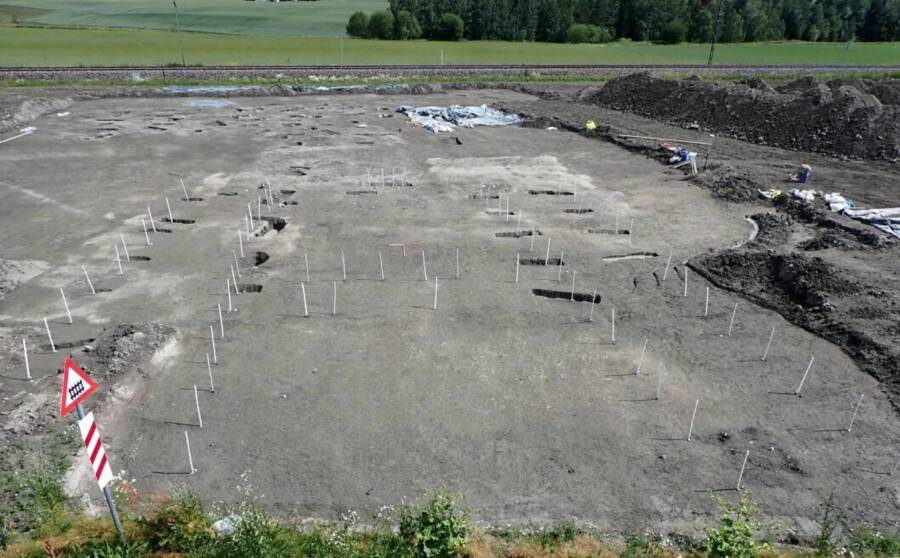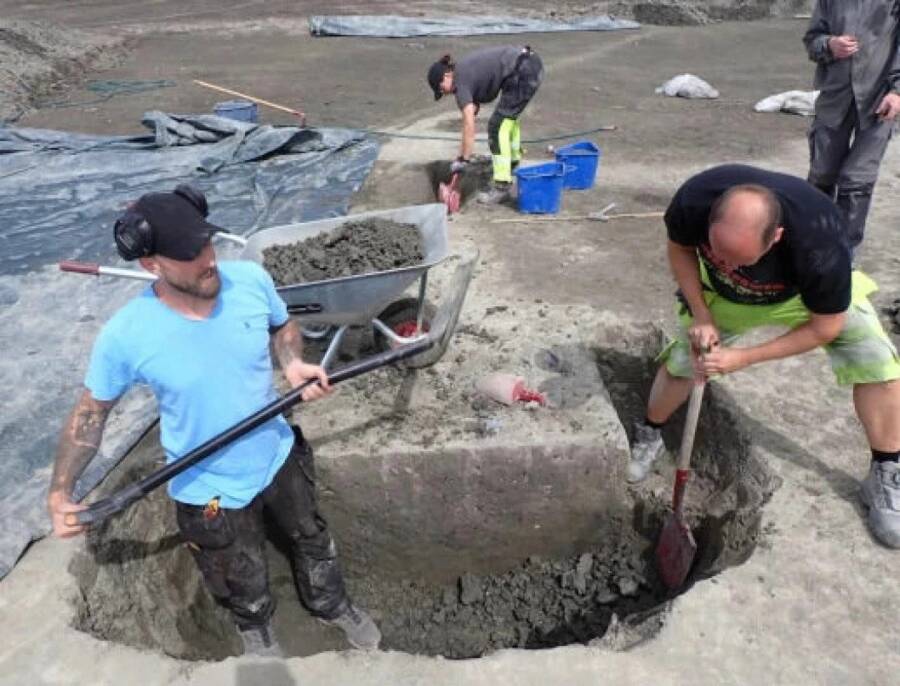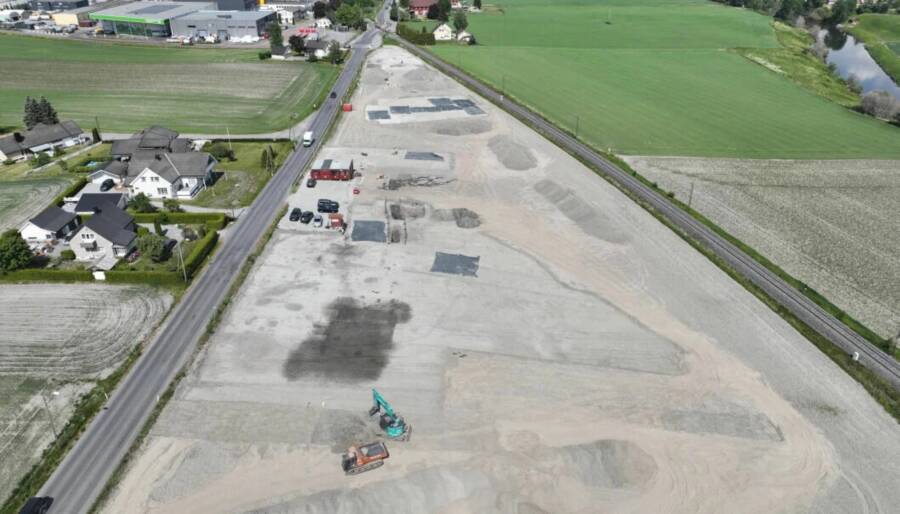Likely measuring in at a whopping 150 feet long, this Viking longhouse is an unusually enormous structure that may have marked a seat of royal power.

The Museum of Cultural HistoryThe Viking longhouse that once existed on this site would have been enormous for its era.
Archaeologists in Sem, Norway have uncovered an array of postholes that once made up the foundation of a grand Viking longhouse.
“It’s an extraordinary building,” archaeologist Christian Løchsen Rødsrud raved to Science Norway, “and we haven’t excavated the whole thing.”
Postholes were a standard feature of Viking longhouses. The ones discovered at Sem suggest that the longhouse was 52 feet wide, though archaeologists are still working to determine its length. The house likely stretches across a nearby road and into another field.
“I expect the house is much longer,” Rødsrud speculated to Science Norway. “Twice or three times as long as it is wide.”
If so, then the Viking longhouse could have once been as long as 150 feet — meaning that it was once a truly remarkable structure to behold.
But that’s not the only extraordinary thing about the Viking longhouse.

The Museum of Cultural HistoryArchaeologists working to excavate one of the postholes.
As Science Norway explains, the proportions and structure of the longhouse are “very different” from that of standard Viking longhouses.
In most prehistoric buildings, the roof is supported by load-bearing posts inside the building. In the longhouse in Sem, however, the walls seem to support the roof, despite the great distance between them. And outside those walls are more postholes, suggesting that slanted walls also supported the roof, or, perhaps, that there were passageways running along the sides of the building.
What’s more, archaeologists aren’t 100 percent sure what era the longhouse belongs to. They’ve hypothesized that it was built during the Viking Age (800 C.E. to 1066 C.E.) but it’s also possible that the structure is older.
That’s because archaeologists also found pottery at the Sem site which appears to date from the early Iron Age (500 B.C.E. to 800 C.E).
“If these shards are not random, the house is much older than the aforementioned houses from the Viking Age,” Jes Martens, a Museum of Cultural History archaeologist and project leader for the excavation at Sem, told Science Norway. “In that case, it’s quite a sensation.”
To determine its age, archaeologists will evaluate seeds and charcoal at the site using radiocarbon dating. Meanwhile, they have plenty of other things to study from the excavation site in Sem.

Fylkeskommune / Frank RødbergThe excavation site at Sem has yielded a number of archaeological treasures.
Archaeologists believe that Sem was once a seat of royal power in Norway. Nearby, a farmworker uncovered a cache of gold coins and gold jewels dubbed the “Hoen Hoard” in 1834. And in 2014, two metal detectorists working at the site uncovered coins, fragments of a shrine, and a piece of a decorative Bronze Age needle.
“What has been individual finds for us until now suddenly becomes part of a larger story,” Rødsrud explained. “This allows us to begin telling the story of the region in a different way. We are in a seat of power here.”
Near the longhouse, archaeologists also found traces of average people. They found evidence of a number of houses from between the fourth and sixth centuries, as well as cooking pits. The archaeologists speculate that the cooking pits were once used for parties because of beads they found inside.
“And lo and behold, a couple of beads appeared in one of the pits,” Rødsrud told Science Norway. “It’s not everyday fare in a cooking pit; it suggests festivities and revelry.”
He added: “At times, larger celebrations were held, and animals were slaughtered. People drank, and political decisions were made. They probably brought the food into the longhouses and ate and drank there. So maybe a beaded necklace was lost in the process.”
Researchers will now study the objects they recovered from the excavation site, and are hopeful to continue exploring more in the area.
“The secrets of the site,” the the Museum of Cultural History noted in a press release, “will now be unearthed.”
After reading about the incredible Viking longhouse found in Norway, see how a 1,100-year-old Viking burial site was discovered by a family in Norway while they were renovating their house. Or, see how a Roman-style sandal from 300 C.E. was discovered in the Norwegian mountains.





